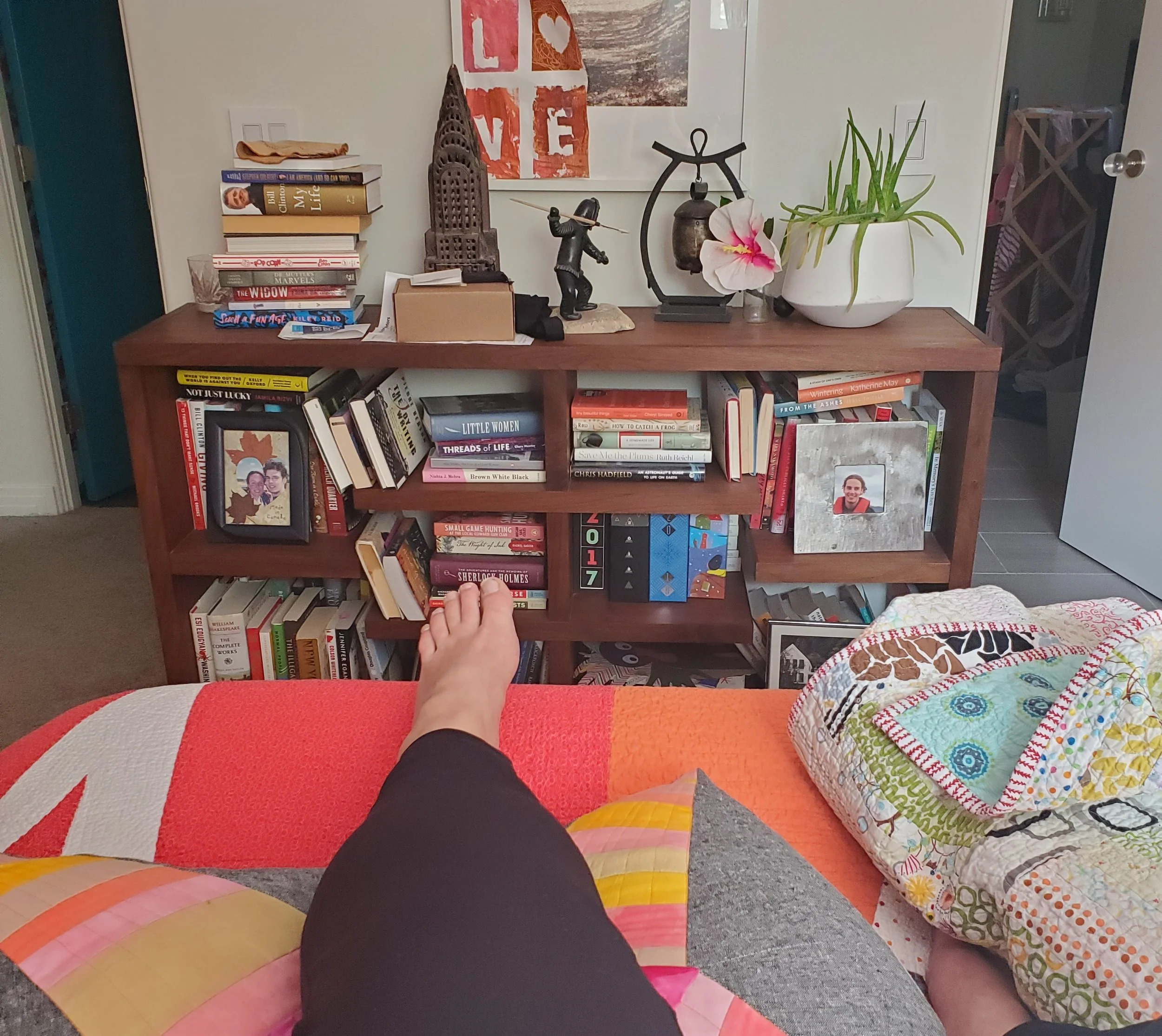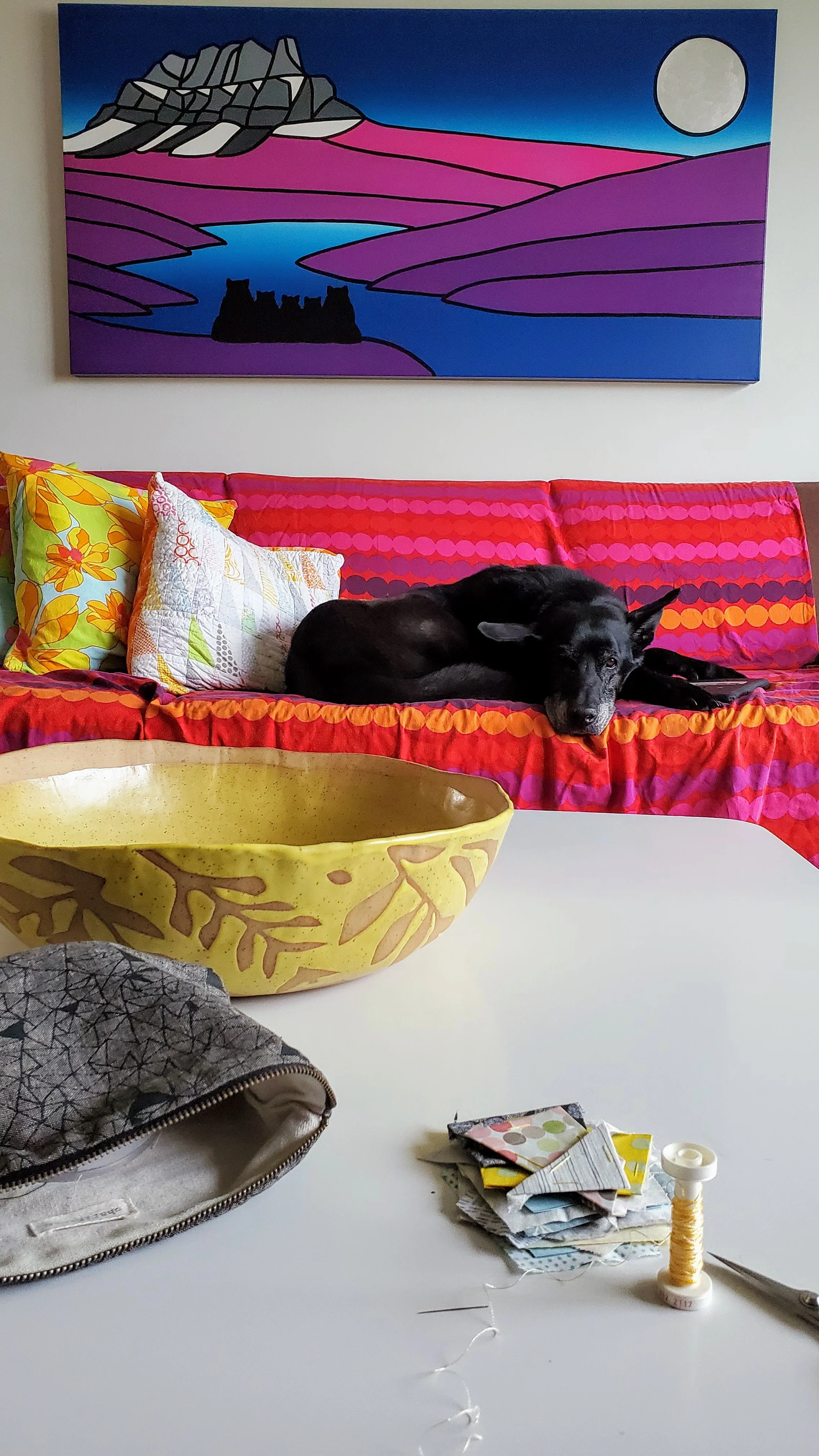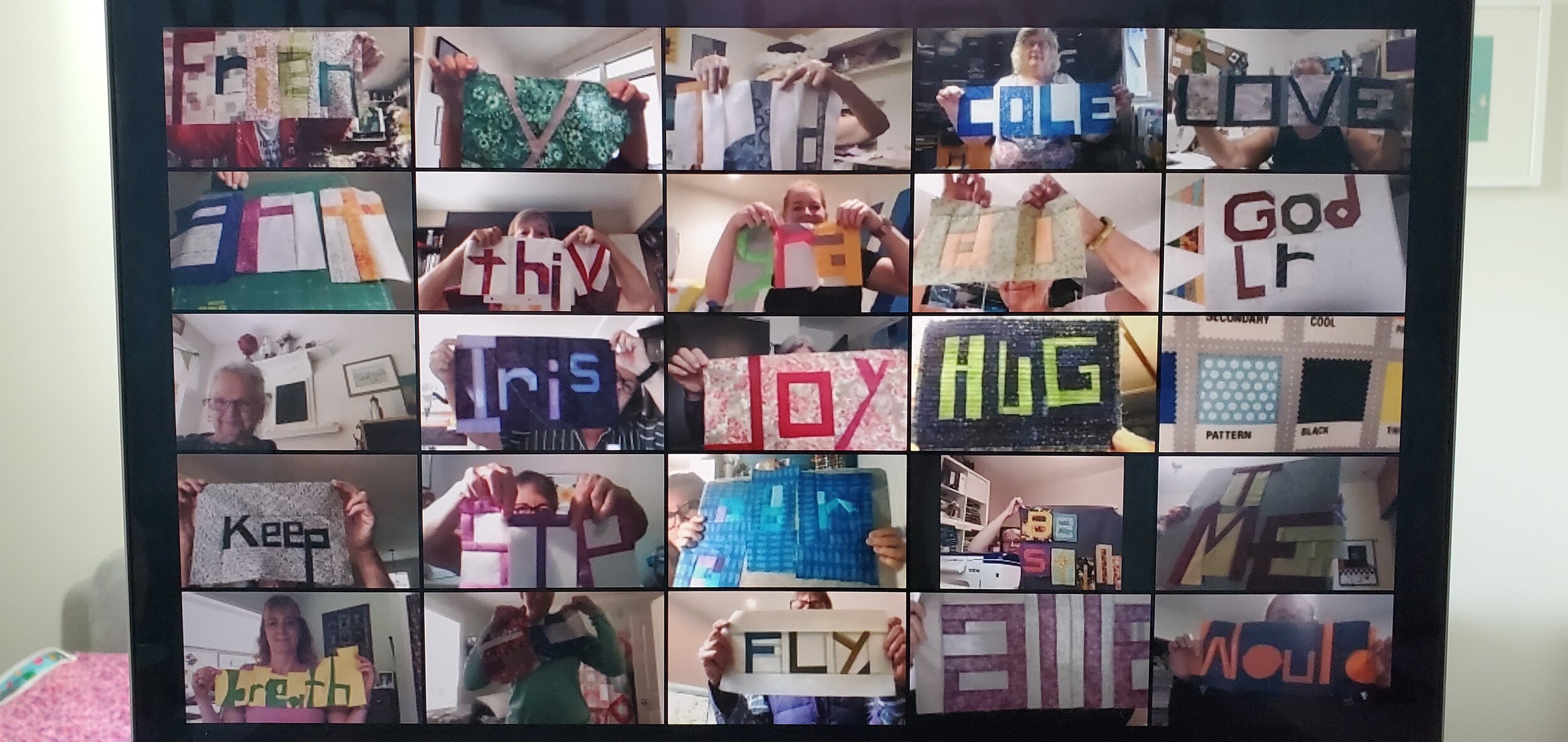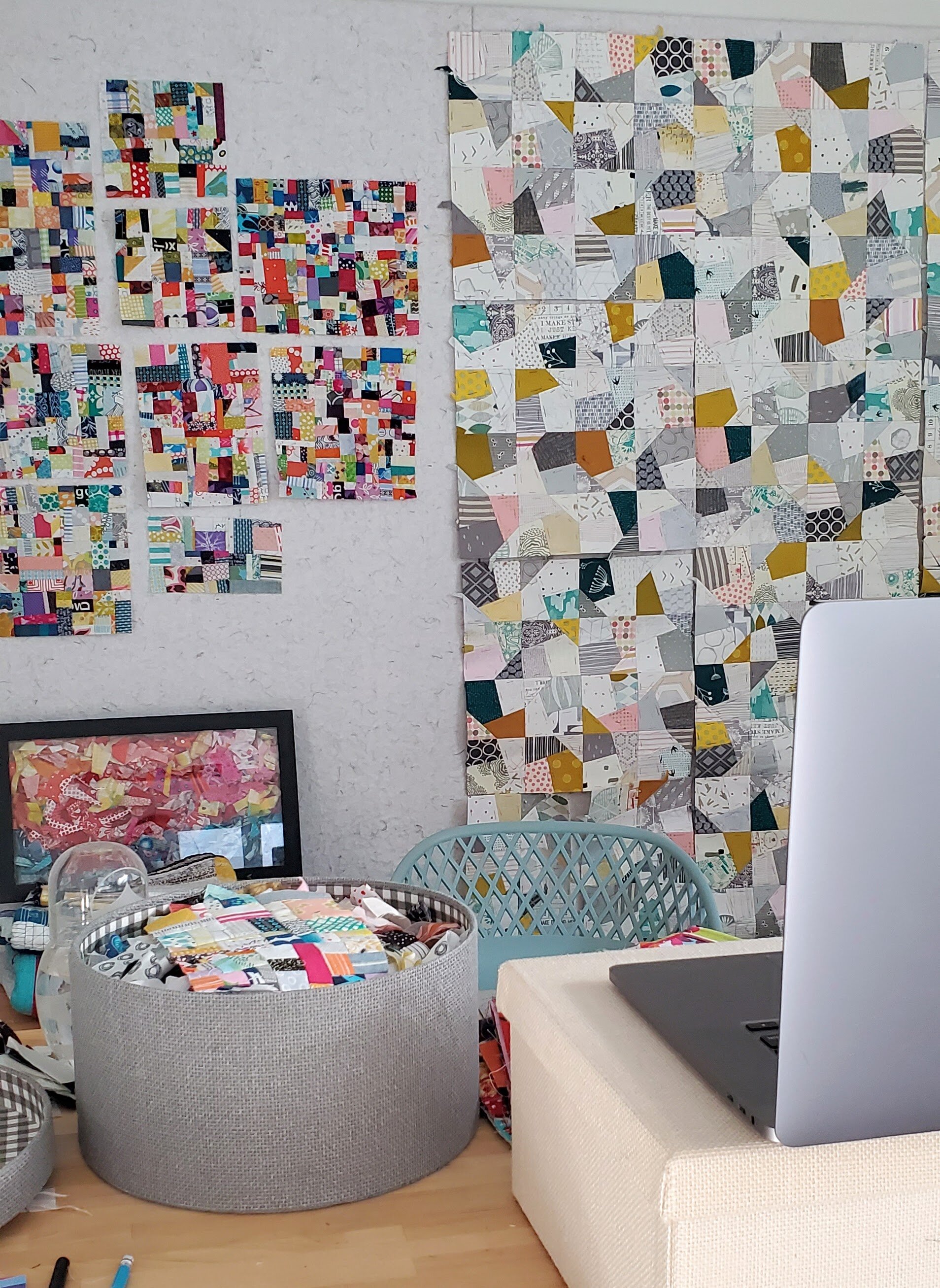Sigh… Big sigh.
Last week I was all excited because I gave myself a day to quilt. It’s been a stressful few months and I needed a day to myself. I also needed a quilt finish or two in order to clear my brain. So I booked a day on the long arm, got a few quilts all prepped, and went in to My Sewing Room to hang out with Emily, who runs the long arm department there. She helped me load my first quilt and thread the machine - the two tasks I always forget how to do. Otherwise I feel pretty comfortable on the long arm. I started up and went along merrily.
Yes, I checked my tension - once - at the very beginning. Admittedly, it was hard to see as it was yellow thread on a yellow part of the backing, but it looked okay. And so I rambled on. Nothing fancy with my quilting, just loops and stars all over. I was listening to some upbeat dance music and in my groove. Emily was doing her thing and left me as I felt more than confident.
Overconfident.
About halfway through I noticed that the tension was off on the stitching. I saw the blue fabric of the background as it wound around the bars and I could see my tension was off. I made some adjustments on the computer of the long arm and continued. Folks, it did not get better. Finally, I conceded to my mistake and called Emily over. I should have stopped there but I decided to proceed, after she made more adjustments. Bad move. Long story medium, we never fixed the problem. I pulled the finished quilt off the frame and set it aside. Maybe it will get fixed with a wash? I foolishly thought to myself.
Emily tinkered with the machine - the bobbin casing was a bit off - and we loaded the second quilt. This time I pulled out an extra bit of fabric and tested the tension before I touched needle to my quilt. Much better! I proceeded to quilt the second quilt without any problem and in the course of those few hours accepted what I needed to do on the first quilt. While waiting for me to finish Emily graciously started the job of ripping stitches for me.
It’s been a long time since I made a mistake like this. I don’t blame Emily, even though I was renting and she was technically supervising me. I know enough, and made that clear when starting that I should have caught this myself. It would be easy to get really frustrated and beat myself up. Or I could get angry and blame Emily too. Neither action is going to help. The only thing to do is let out that big sigh, find your favourite seam ripper, and sit down to rip. It’s just a mistake on a quilt, it isn’t life threatening or even life changing.
Ripping stitches when the tension is loose on one side is actually quite easy, just very time consuming. This quilt measures over 60” square and I have a tendency to quilt things to death, so there was a lot of ripping to do. Thankfully, my son and I have been rewatching Ted Lasso so I sat with him and ripped, and ripped. He would fiddle with the pile of thread that grew with each episode. Therapeutic for both of us in many ways. It took me the entire third season and almost all of the Netflix series One Day to finish ripping. I only put one hole in the backing so that will be an easy fix.
It was all just a mistake, it happens. I know many of us would get ourselves quite worked up over this. Maybe call ourselves a few names? Cast blame and shame? Perfectionism is a nasty beast. Of course we want to improve, not feel like we are wasting time, and get things finished. That’s normal and understandable. But making ourselves feel bad over quilting? Totally uncalled for and unnecessary. Shit happens. Acknowledge it, clean it up, and move forward.
Time to rebook in to the longarm. This time I will remember to bring an extra piece of fabric for testing tension. I will also not be so cocky and use the resources there (Emily) to make sure I am doing things right.











